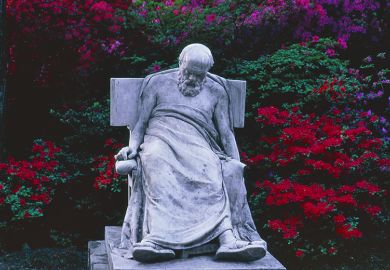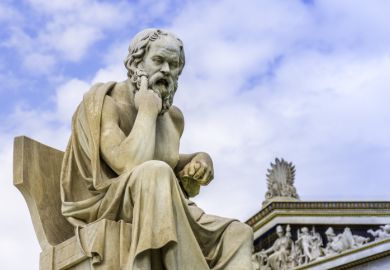This book aims to discuss "Parmenides's influence on Plato", and it focuses mainly, but not entirely, on Plato's Republic V , Parmenides and Sophist . As John Palmer fairly observes, what is relevant to this question is not how Parmenides should be interpreted by us, but how he was interpreted by Plato, and the book makes a number of controversial suggestions on how particular passages in Parmenides could have been taken by Plato, as well as on how particular passages in Plato should be taken by us. But Palmer never really discusses what is to count as "influence" or how to recognise it.
Palmer's first main parallel is between Parmenides's "three ways of enquiry" and Plato's distinction in Republic V between knowledge, belief and ignorance. On his account, Parmenides distinguishes between what necessarily-is, what necessarily-is-not, and something intermediate. Plato similarly distinguishes between what completely-is (which can be known), what completely-is-not (of which one must be ignorant), and something intermediate, described as what-is-and-is-not (which is the object of belief).
Palmer infers that Plato took Parmenides to be agreeing with him that there are two levels of being:the intelligible forms and perceptible things. He tries to draw out this contentious parallel in various ways, but he simply never mentions the obvious dis-parallel, namely that Plato supposed that there are many forms, while Parmenides apparently supposed that only one thing necessarily-is. This is a notable lacuna in his discussion.
When, later in the Sophist Plato appears to attack Parmenides, Palmer argues that Plato intends to attack what he sees as misinterpretations of Parmenides while still believing that Parmenides, properly interpreted, is right. He takes a similar view of the second part of the Parmenides , where the character Parmenides explores "his own hypothesis" about "The One". His proposal here is that the four deductions with negative conclusions (ie the first, fourth, sixth and last) give misinterpretations of Parmenides's position, but the others - and in particular the second - give the true account. For their subject, "The One", is the (material) cosmos; and, of the attributes there demonstrated to belong to it, those that coincide with what Parmenides did assert of his "One" belong to it "in virtue of its own nature" and "in relation to itself", while the others (that appear to contradict them) also belong to it but not in these ways. So the apparent contradictions are (allegedly) resolved, and the positive deductions are seen as giving Plato's own opinions.
This brief review has not done justice to the scholarly ingenuity with which Palmer defends his views, or to their implausibility.
David Bostock is lecturer in philosophy, University of Oxford.
Plato's Reception of Parmenides
Author - John A. Palmer
ISBN - 0 19 823800 2
Publisher - Clarendon Press, Oxford
Price - £45.00
Pages - 249
Register to continue
Why register?
- Registration is free and only takes a moment
- Once registered, you can read 3 articles a month
- Sign up for our newsletter
Subscribe
Or subscribe for unlimited access to:
- Unlimited access to news, views, insights & reviews
- Digital editions
- Digital access to THE’s university and college rankings analysis
Already registered or a current subscriber?



